Inflammation is a horrible word. As the body goes through an inflammatory process, complications arise. Arthritis creeps into the joints. Organs begin to wear out or struggle. The skin develops irritation. And we look for every possibility to combat the problems – in ourselves and our dogs. One of the more recent supplements to pop up is omega fatty acids, specifically omega-3s. And the most popular source happens to come from fish oils. Fish oil for dogs is one of the newest trends in alternative medicine, and while there’s potential, there’s also a fair amount of uncertainty. So before you rush to stock up, make sure you have all of the information.
Omega-3 Fatty Acids
Dietary fats come in four different forms, some you may recognize and some you may not. They’re called dietary fats because you have to ingest them; the body doesn’t make them. (That goes for dogs, too)
- Trans fats (these are bad)
- Saturated fats (still not great)
- Monosaturated fats
- Polyunsaturated fats
Omega fatty acids fall into the final category. And despite the “fatty” in their name, they do some good. We need omegas to help create hormones that regulate blood flow and calm down inflammation in the body. And our favorite? Omega-3s.
The best source of omega-3s comes from cold-water fish, shellfish, plant oils, nut oils, and flaxseeds. So when we eat those foods, we introduce omega-3s into our systems. Unhappily, most of those don’t feature much on canine menus. So we turn to fish oil for dogs as an alternative.
Benefits of Omega-3s
But why fuss about fish oil for dogs? Sure, blood flow and inflammation sound nifty, but what else do omega-3s do? As it turns out, a lot:
- Skin: Omega-3s improve hair coats and reduce skin irritation. The result is a dog with shiny fur and less itching.
- Brain: Omega-3s helps with brain development in puppies. It continues to support cognitive function in senior dogs, staving off cognitive dysfunction syndrome.
- Joints: As dogs age, they develop osteoarthritis. Inflammation within the joints calms down with the assistance of omega-3s. Add in glucosamine, and you have a nice cocktail.
- Heart: Remember that blood flow assistance? When you add in fish oil for dogs, you help reduce the risk of atrial fibrillation. This irregular heart rhythm is a dangerous development in many cardiac diseases.
Many internet sites also report a slowing of cancer. It sounds wonderful (anything battling cancer sounds miraculous). However, there are NO definitive studies. Everything’s in the preliminary stages. So don’t hang your hopes on that one just yet.
Fish Oil for Dogs
So fish oil for dogs has the potential to provide benefits to your dog (and you, for that matter). And it’s all courtesy of two key components:
- Docosahexaenoic Acid (DHA)
- Eicosapnetaenoic Acid (EPA)
When you look at a bottle of fish oils, they’re the two numbers you see. And each works differently within the body. DHA plays a stronger role in the brain, while EPA has the biggest benefit to the heart. Both work to bring down inflammation. (And they’re insanely long words that pretty much no one wants to pronounce)
We love all that DHA and EPA offer, but, as with probiotics and CBD oil, there’s a catch. Fish oil for dogs may offer many good, but it can also do A LOT of bad.
Risks of Fish Oil for Dogs
As with other pet supplements, no one regulates fish oil for dogs. But unlike coconut oil, veterinarians DO use fish oil supplementation. It just comes with a lot of careful monitoring.
You need to talk to your vet before starting fish oil for dogs. It’s the safest course of action. While rare, side effects happen:
- Bad Breath: Maybe not the most horrible thing, but you ARE administering FISH oil. You need to prepare yourself for stinky fish breath.
- Clotting Problems: Omega-3s have the ability to reduce clot formation. It’s helpful for some cardiac patients. But if your dog’s going to surgery? You don’t want that.
- Intestinal Upset: Not every pup tolerates fish oils. They may adjust over time, or they may not.
- Reduced Healing: While no one likes inflammation, it’s a natural part of the healing process. So if you have omega-3s working against the body, your dog may take longer to recover.
If you notice any of these problems, talk with your vet. Dosing needs careful adjustment. NEVER follow the amount listed on the bottle! Follow the instructions of your vet. Overdosing on fish oils increases the risk of a negative reaction for your dog.
Choosing a Fish Oil for Dogs
Before you start fish oil for dogs, ALWAYS talk to your vet. They need to make sure it won’t interact with any medications your dog’s currently taking (ESPECIALLY if they’re already on a blood thinner!). They’ll also give you the proper dose. EPA and DHA serve different functions, and you made need a specific amount of one, the other, or both.
Once you have that dose in hand, you then need to keep the following in mind. After all, there are SHELVES of fish oils out there.
- Source: Fish oil for dogs come from…well, fish. To make the most ecologically sound choice, you want wild-caught fish as your source. Farmed fish accumulate the highest levels of heavy metals, toxins, and other harmful ingredients. You DON’T want those in addition to the omega-3s. Also, most farming operations don’t meet sustainable practices.
- DON’T pick up krill oil! Dogs need TWICE the dose compared to fish oil. Also, krill fishing harms the Antarctic environment.
- Quality-Control: Supplements aren’t regulated. So you need to do your homework to protect your dog from harmful additives. Look for products manufactured in the U.S., Canada, Western Europe, and Australia.
- Form: Fish oil for dogs come in capsules or liquid. Neither’s better or worse than the other. You need to figure out which your dog tolerates. (News flash: not every dog LIKES the taste of stinky fish oil!)
Types of Fish Oil for Dogs
Fish oils for dogs come in three types. The label SHOULD tell you which you’re getting (if not, you can usually run an internet check for the answer):
- Natural triglyceride oil
- Ethyl ester oil
- Synthetic triglyceride oil
As you might guess, natural triglycerides are natural. They don’t undergo purification, making it easy for your dog’s body to absorb the omega-3s. Of course, no purification also means any potential contaminants come along for the ride. (Which is why that source is so important)
Ethyl esters get distilled to remove impurities. You still get high omega-3 levels, but they have an alcohol group attached in the distillation process. So they’re “semi-natural.” They may not taste as good, and some owners find their dogs end up gassier.
Synthetic is exactly what it sounds like – made in a lab. They’re difficult for the body to absorb as a result. They also have the lowest level of omega-3s. But there aren’t any impurities or contaminants to worry about. And they cost the least.
If you want the best, go with the natural triglycerides. Make sure you’ve chosen a wild-caught fish source from one of the quality-controlled countries. You’ll get a safe fish oil for your pup with the most benefits.
Caring for Fish Oil for Dogs
As with other supplements, proper storage matters. If you don’t follow the instructions, your fish oil for dogs can quickly become that expensive bottle of oil you threw in the trash.
- Buy fish oils in dark or opaque bottles. They’re sensitive to light.
- Store the bottle in the refrigerator.
- If using a pump bottle, keep the lid screwed down tight.
Fish oils are susceptible to oxidation. If they get exposed to oxygen, they start a chemical reaction. And the result? Rancid fish oil. (YUCK!)
If the bottle starts to smell off in the slightest (you know, the smell of nasty fish), throw it away immediately. You don’t want to make your dog sick.
The Best Fish Oil for Dogs
If you’ve spoken with your veterinarian about starting fish oil for dogs, it’s time to consider the best options. There are THOUSANDS of fish oils out there. Your vet may make a specific recommendation for you. If so, follow their instructions. Most of the time, though, they’re comfortable with you venturing out on your own. Take your time and do your research. You have A LOT of numbers to look at (and, sometimes, a lot of math to do). And you may need to switch from a liquid to a capsule, depending on your dog’s preferences.
If your dog absolutely refuses to go anywhere near every fish oil option you try, don’t despair. Fish oils exist in those cold-water species, no matter their form. Our girl happens to get a boost of omega-3s when she snacks on her Honest Kitchen Ocean Chews. Personally, I hate the smell of fish that permeates the house while she’s chomping away, but they’re one of her favorite treats. They clean her teeth and add some fish oil to her diet. So there are ALWAYS options out there.
Let me clue you in on a little secret: you DON’T need to buy fish oils specifically marketed for dogs. As a matter of fact, at one of the ACVIM conferences I attended, they showed a chart of fish oil brands, comparing quality and ingredient analysis. The top brand? A local pharmacy’s generic product. So it’s no surprise Amazing Nutrition appears on this list. The source is wild-caught salmon, and the gelatin-sealed capsules get processed in the U.S. The dark bottle protects against light intrusion, with an easy top to reseal against the air. The capsules work well for dogs that dislike fish oils, or you can easily puncture them and squeeze the oil onto their food. And, best of all, these are natural triglyceride oils!
Downside? Honestly, the only complaint people had was some dogs disliking the taste. But you can find that with any fish oils for dogs.
The Good
- Natural triglyceride oil
- Wild-caught salmon
- Processed in U.S.
- Dark bottle
- Capsules
The Bad
- Dogs may not like the taste
Best Paw adds extra vitamins to their fish oil for dogs to give skin and hair coats a boost. Their wild-caught Alaskan salmon serves as the base, and then they throw in B and D vitamins for a healthy, glowing coat. They process everything in the U.S., adhering to careful standards. You get the natural triglyceride oil in a dark bottle that keeps the light out. Even the label reminds you to pop it into the fridge. And Best Paw supports rescues and shelters!
The downsides? This particular fish oil for dogs has a pronounced fishy scent. If you’re sensitive, you may need to skip it. Also, the abundance of B vitamins WILL turn your dog’s urine bright yellow. It’s nothing you need to worry about – unless you’re working on potty training. Then you may need to fret over staining.
The Good
- Natural triglyceride oil
- Wild-caught salmon
- Processed in U.S.
- Dark bottle
- Liquid
The Bad
- Strong fishy odor
- Pump leaks
- B Vitamins turn urine bright yellow
Grizzly offers a liquid fish oil for dogs, allowing you to mix it into your dog’s food. They work with wild-caught Alaskan salmon, pollock, and whitefish, and their products stay within Alaska and Washington for processing. The opaque bottle prevents light from entering, and the pump features an air-tight, medical-grade seal. You WILL see the National Animal Supplement Council (NASC) seal, which is the closest supplements get to approval in the animal realm. And it’s a natural triglyceride oil.
So what are the downsides? While the pump promises medical-grade quality, it leaks. Ensure you check the seal carefully, especially because you don’t want air to get to the fish oils. Also, they add rosemary extract to their formula to prevent the oxidation process. If you’re not following the dose of a vet, you could get into trouble. Some dogs develop tremors or seizures when they receive high amounts of rosemary extract. ALWAYS talk to your vet before starting fish oils for dogs!
The Good
- NASC seal
- Natural triglyceride oil
- Wild-caught salmon, pollock, and whitefish
- Processed in U.S.
- Opaque bottle
- Liquid
The Bad
- Pump leaks
- Contains rosemary extract
One of the worst things people hate about fish oil for dogs is the smell. Iceland takes care of that by removing the scent. They run Norwegian salmon through ultra-fine filters that remove the fishy smell in the process. (Mostly – straining can only do SO much) The aluminum bottle keeps light out while also avoiding plastics, which might leech unwanted contaminants into the fish oil.
Downsides? Iceland uses the ethyl ester form for their fish oil for dogs. Again, it’s not necessarily bad but prepare for your dog to get gassy. Also, they use a combination of wild-caught AND farmed salmon. And, as tends to happen with all liquid bottles, the pump can leak.
The Good
- Processed in Norway
- Opaque, aluminum bottle
- Liquid
The Bad
- Ethyl ester oil
- Mixture of wild-caught and farmed salmon
- Pump leaks
If you’re interested in fish oil for dogs with the stamp of approval from veterinarians, you want Nordic Naturals. Why the endorsement? They get independent analysis for purity, accuracy of ingredients, and safety control. They use wild-caught sardines and anchovies – chosen for their short reproductive cycles (it makes them a sustainable choice). Nordic Naturals processes their fish oils in Canada, following the World Health Organization and the European Pharmacopoeia standards. And, as you might guess, you get the natural triglyceride oils inside the gelatin capsule.
The downside? If you have a large dog, you could end up doling out A LOT of capsules to meet your prescribed dose. So even with the large bottle, it’s not cost-effective. However, for small dogs, it’s perfect.
The Good
- Natural triglyceride oil
- Wild-caught sardines and anchovies
- Processed in Canada
- Opaque bottle
- Capsules
The Bad
- Not cost-effective for large dogs
Omegease offers a potent blend of cold-water fish in their fish oil for dogs. They use wild-caught sardines, anchovies, herring, AND mackerel to formulate their liquid formula. Everything’s processed in Iceland, with the final product bottled in the U.S., following independent testing. And you get the natural triglyceride oil in the handy opaque bottle.
So what are the downsides? The label claims you won’t put up with a fishy odor, but with FOUR fish? Yeah, prepare for stinky breath from your pup. And this liquid dispenser has one of the leakiest pumps out there. You’ll want to have paper towels handy.
The Good
- Natural triglyceride oil
- Wild-caught sardines, anchovies, herring, and mackerel
- Processed in Iceland
- Opaque bottle
- Liquid
The Bad
- Strong fishy odor
- Pump leaks
You REALLY don’t want to deal with liquid or capsules. Pet Honesty provides a different alternative: a dog treat. They use wild-caught Alaskan salmon to formulate their chews. The company processes everything in the U.S., and they skip unwanted ingredients like wheat, soy, sugar, or preservatives. They add in kelp as a filler, but your dog will get natural iodine, which won’t hurt.
Downsides? As a treat, your dog gets the LOWEST level of omega-3s. And since you need to worry about calories (something the company DOESN’T provide information on), you can’t overdo it. Also, you get unwanted fillers such as sweet potato and rosemary extract. So perhaps it’s easier to administer, but you don’t get pure fish oil. Oh, and as to the form – your guess is as good as mine. The company’s tight-lipped on that information, too.
The Good
- Wild-caught salmon
- Processed in U.S.
- Opaque bottle
- Chew
The Bad
- Lowest Omega-3 levels
- Extra fillers, including rosemary extract
- Uncertain as to fish oil form
Vital Pet sticks to a single ingredient for their fish oil for dogs: wild-caught Alaskan salmon. And while, by now, it sounds like all of the salmon in Alaska are getting bottled, Vital Pet makes sure to observe sustainable practices (in fact, the Marine Stewardship Council gave them a stamp of approval!). Then they keep everything safely processed within the U.S. to meet your supplement concerns. You get the natural triglyceride oils, too. And if you don’t want to fight with a pump, they offer the alternative of a flip cap!
The downsides? The flip cap comes because people struggle with the ever-present leaky cap. And even the cap presented some challenges. You may want to invest in an oral syringe to help limit the mess.
The Good
- Natural triglyceride oil
- Wild-caught salmon
- MSC-approved
- Processed in U.S.
- Opaque bottle
- Liquid
The Bad
- Pump leaks
- Flip cap gets messy
If you want another fish oil for dogs option with NASC approval, look no further than Zesty Paws. They use wild-caught Alaskan salmon (I know, it seems like almost everyone does), and they process everything in the U.S. Their trademark opaque bottles shield the fish oil from light, and you get a handy reminder to store open bottles in the refrigerator. They also use natural triglyceride oils, skipping any unneeded distillation.
So what are the downsides? The pumps on the bottles REALLY cause problems. Owners struggled with breakage and leaks. Try to go easy on them. Also, this is another of the smellier fish oils for dogs out there.
The Good
- NASC seal
- Natural triglyceride oil
- Wild-caught salmon
- Processed in U.S.
- Opaque bottle
- Liquid
The Bad
- Pump leaks
- Strong fishy odor
Something’s Fishy
Fish oil for dogs is one of the newest health crazes to hit the pet world. And there ARE benefits to this particular supplement – when you work in concert with your veterinarian. You need a medical professional to provide proper dosing – the bottles are NOT accurate. And with the potential health risks, if you go too high, it’s a gamble to venture out on your own. Make that appointment and talk to your vet first.
Then you’ll just need to prepare yourself for fishy kisses from your pup. It’s not the worst thing in the world. Especially if they start feeling better. You can always prepare a salmon dinner for yourself and reciprocate!

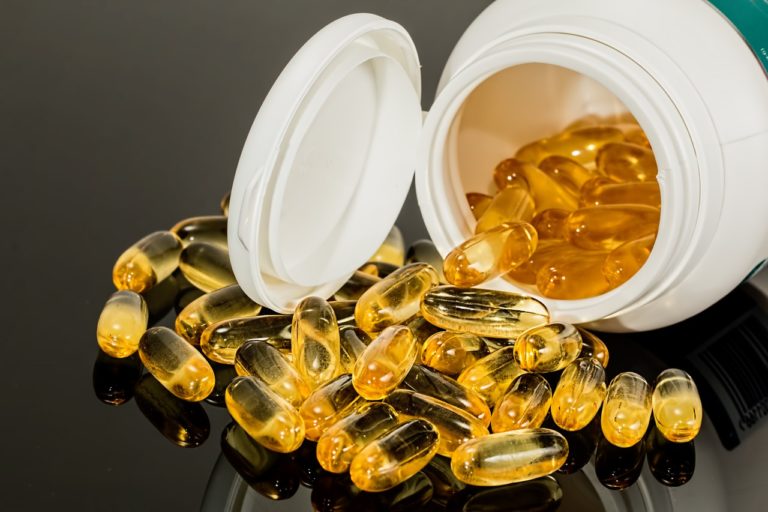
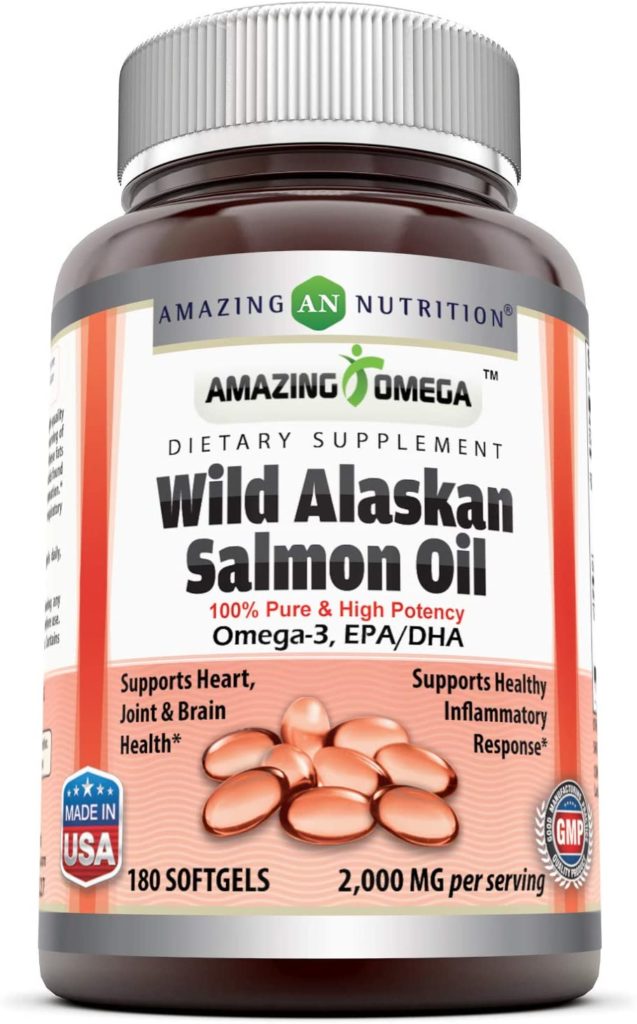
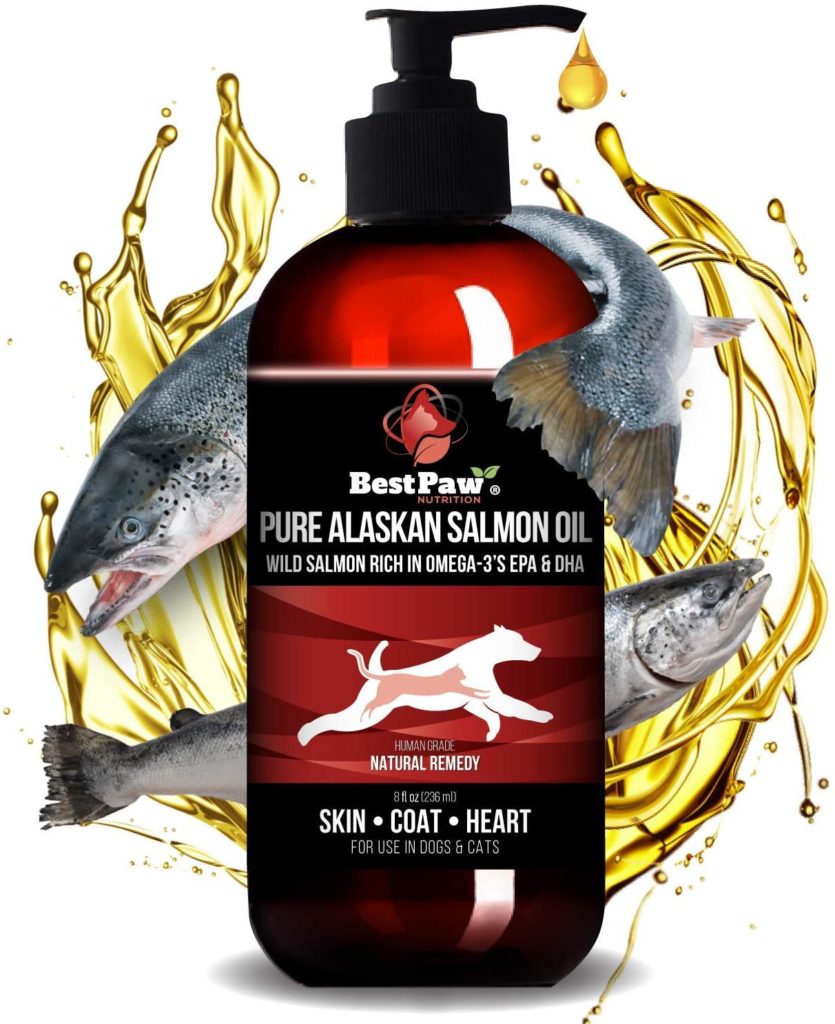
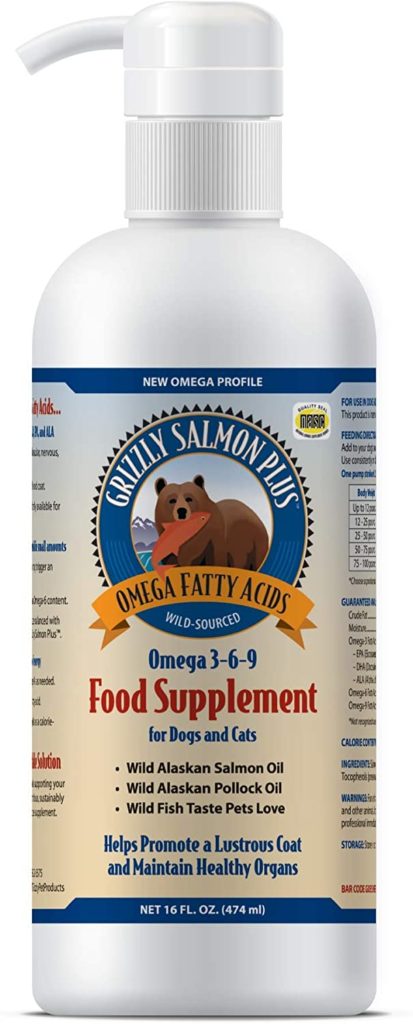

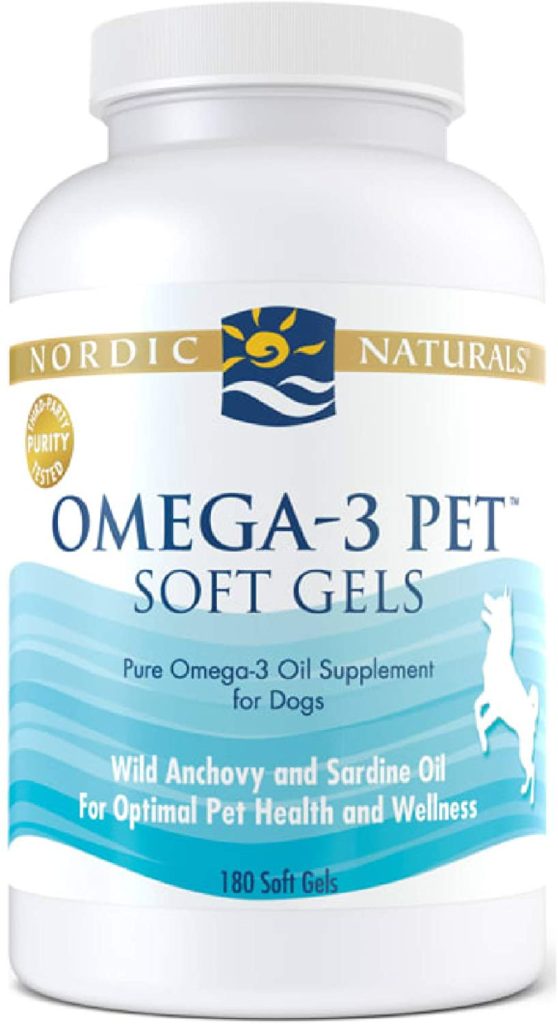
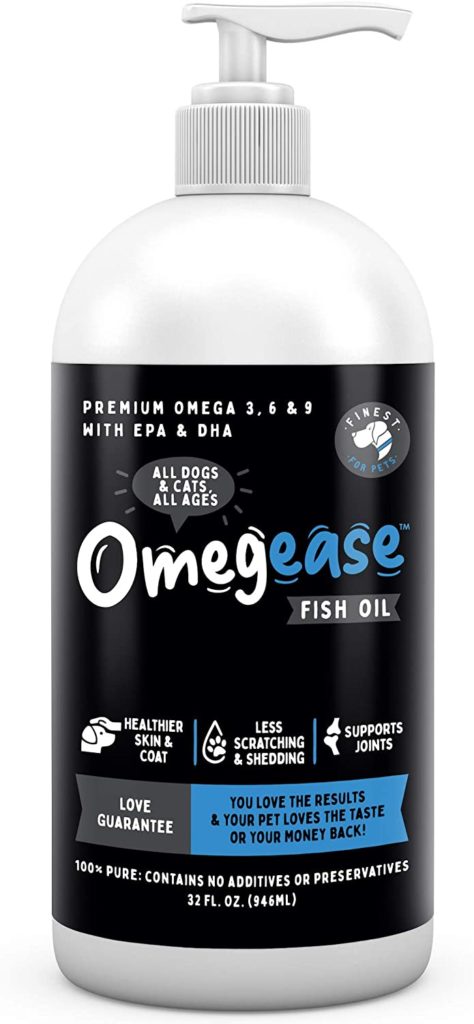
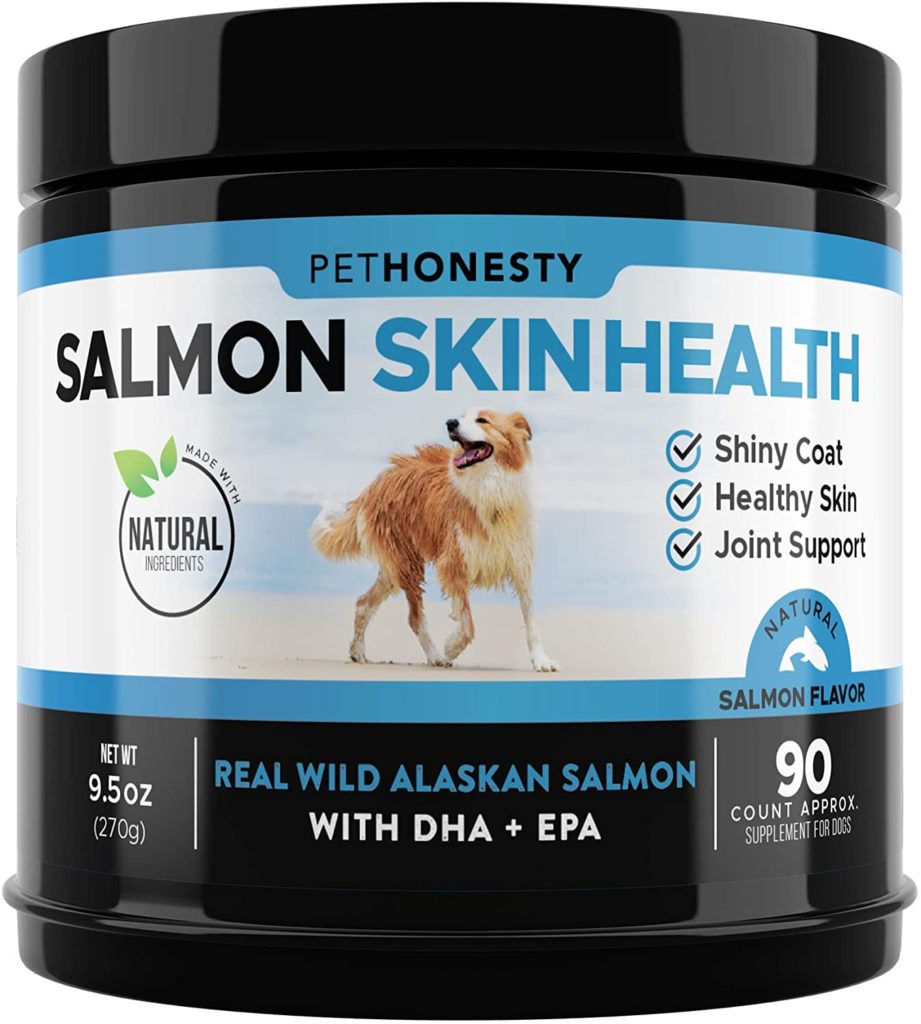
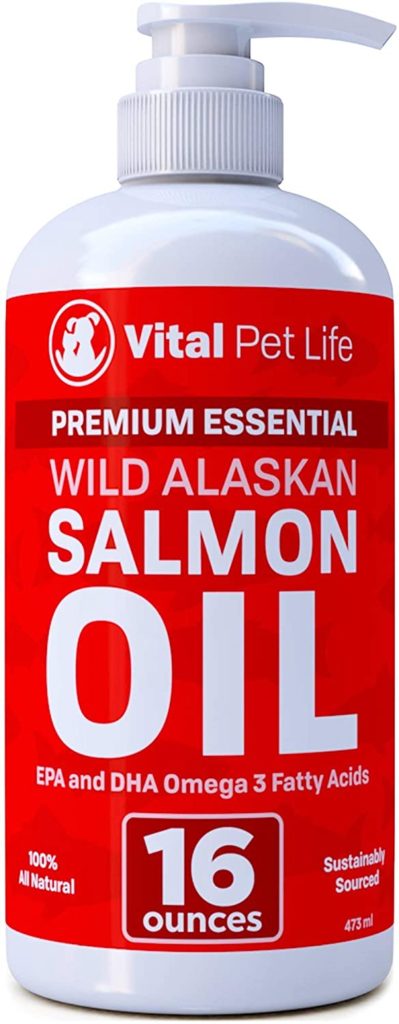
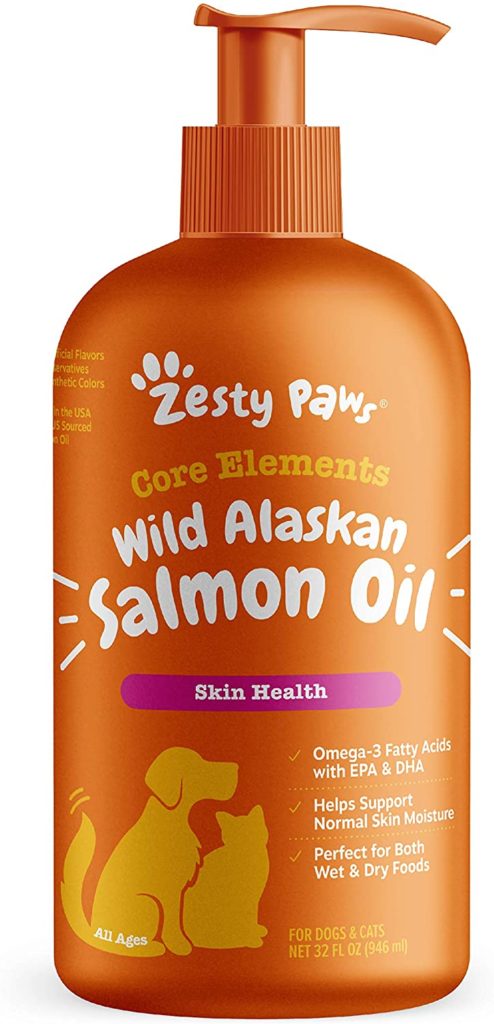




No comment yet, add your voice below!